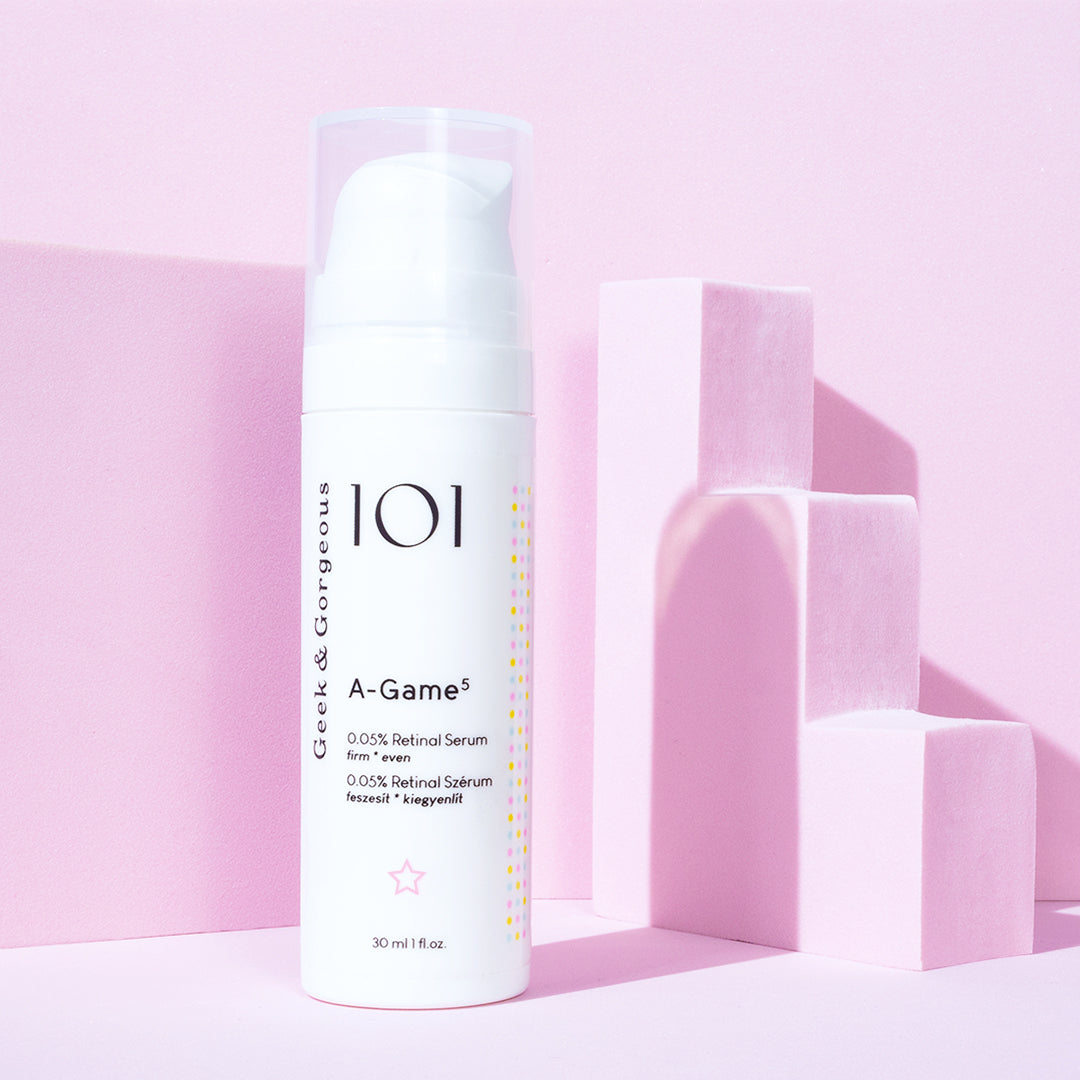Products with AHA, BHA, PHA are all over the internet and many people already include at least one of these classes in their skin care routine.
All of these terms represent organic molecules, with a Hydroxy Acid group (the letters HA). The meanings of each acronym are easy: A is Alphahydroxy acid, B Betahydroxy acid and P Polyhydroxy acid. But what is the difference at a chemical level? And can all skin types use them?

What is AHA, BHA and PHA?
These are the popular chemical exfoliants (although they are not the only ones with this action) and are often part of smart-aging care as they help with the cell renewal process.
With age, the process of “peeling” and cell renewal slows down, resulting in duller, thicker skin. That’s where hydroxy acids come in. Although science still does not explain much about their mode of action, it is known that hydroxy acids help to “peel off” the layer of dead cells in the stratum corneum, accelerating the process of cell renewal.
In general, the usage of hydroxy acids in your routine will help with:
- Reduction of hyperpigmentation (caused by sun exposure)
- Enhanced appearance of wrinkles
- Increased skin radiance
- Smoothing of skin texture
The name hydroxy acid comes from the fact that all of them, in their chemical formula, have a hydroxy group (or alcohol group, represented by the letters OH) and a carboxylic acid group (C(=O) OH).
What are the differences?
The main differences are in their structure and solubility.
The names alpha, beta and poly are related to chemical structure.
– In AHA, the hydroxy group (represented as “-OH”) is on the alpha carbon of the carboxylic group (represented as -COOH)
– In BHA, the hydroxy group is on the beta carbon, ie, 2 carbons apart from the carboxylic group.
– On the other hand, PHAs are a second generation of AHAs, as the hydroxyacid group has the same presentation but the rest of the molecule is larger.


AHA: Alphahydroxy Acid
AHAs are normally associated with the treatment of hyperpigmentation and the improvement of wrinkles, but they also help with hydration (like lactic acid). It is due to these properties that they are recommended for dry and/or mature skin.
This group includes lactic, glycolic and mandelic acid. These acids act at different levels, with glycolic acid being the “strongest” and mandelic acid the mildest and therefore suitable for sensitive skin.
Our products:
BHA: Betahydroxy Acid
For BHAs in cosmetics, only salicylic acid is part of the category, which has the characteristic of being slightly oil-soluble. This makes it an amazing ingredient that penetrates pores easily, unclogging them.
Furthermore, they also have an anti-inflammatory action, making them more suitable for oily and/or acne-prone skin.
Our product:


PHA: Polyhydroxy Acid
PHAs are generally larger molecules than the previous ones and therefore act more slowly and do not penetrate the skin as much. The exfoliation will not be so harsh, making these molecules perfect for sensitive skin, with rosacea or eczema.
PHA exfoliants are also associated with antioxidant action, which could be beneficial for mature skin. Examples include gluconolactone and lactobionic acid.
Our product:
Which one is the best for my skin?
As explained previously, due to its characteristics AHA products are usually indicated for dry skin, while salicylic acid is typically indicated for oily skin. It all depends on your skin type and your problems.
If your skin is dry with signs of aging, AHAs are a good bet. For that you can count on Geek & Gorgeous Smooth Out Exfoliant.
On the other hand, if blackheads are a concern, introducing BHA may be a good idea – which can be achieved with Geek & Gorgeous Cheer Up Exfoliant. Do you actually struggle with oily but sensitive skin? Go for Geek & Gorgeous Calm Down Exfoliant with a combination of PHA and BHA.
All in all, you need to take into account your skin’s sensitivity and never forget sunscreen, even when using hydroxy acids in your evening routine.
Do you still have questions about a product, or would you like to go further in your beauty routine? Feel free to contact us at info@disruptifbeauty.ch. You can also book an appointment via this link for an online consultation to carry out a skin diagnosis.









